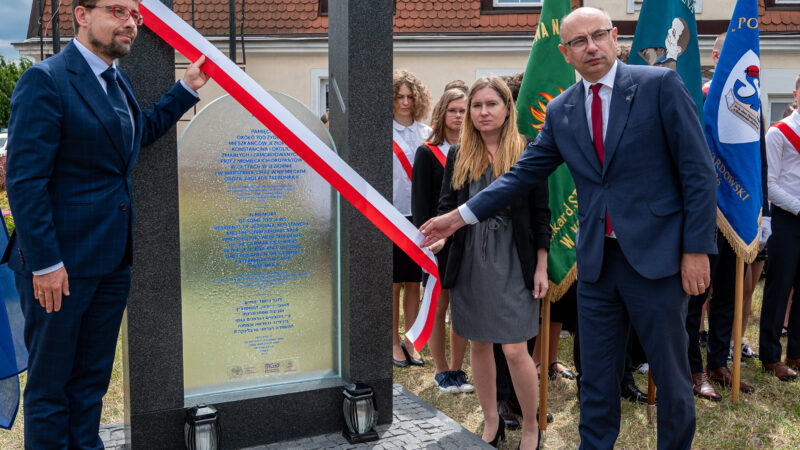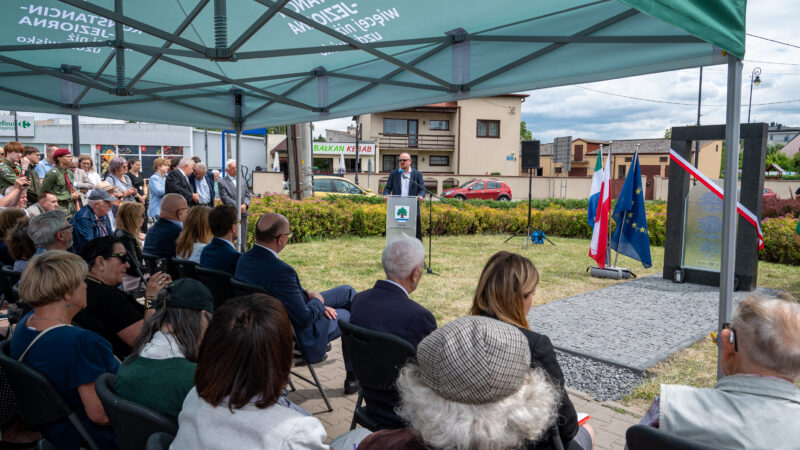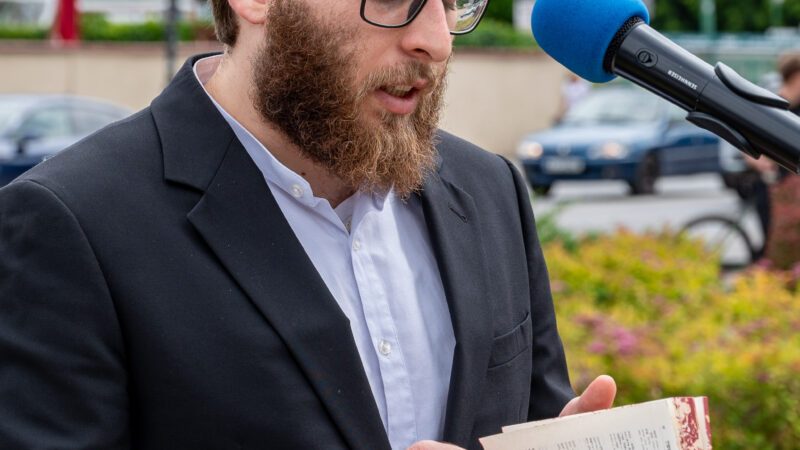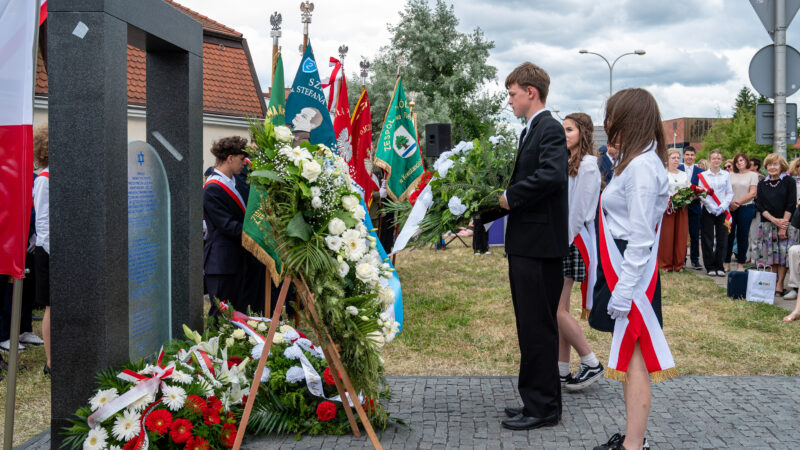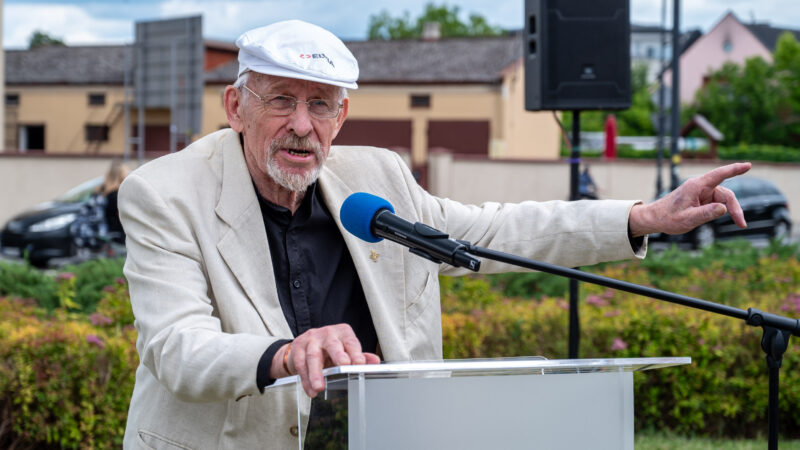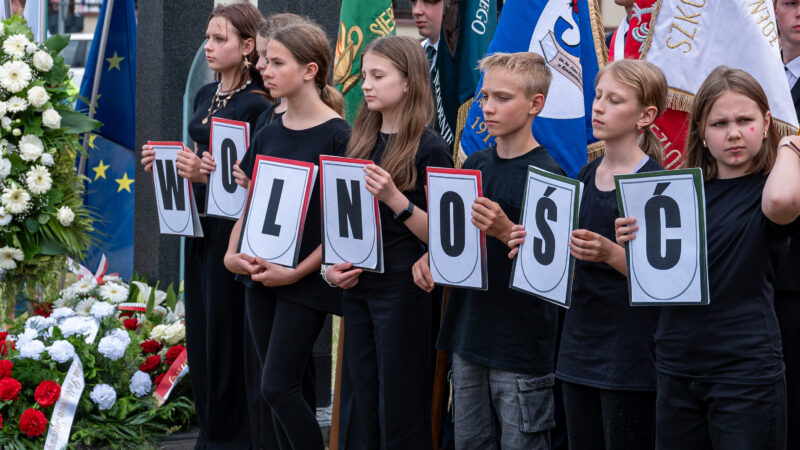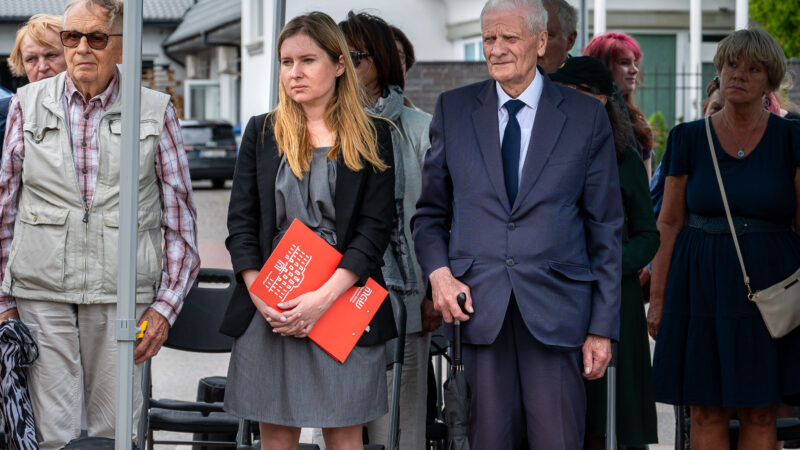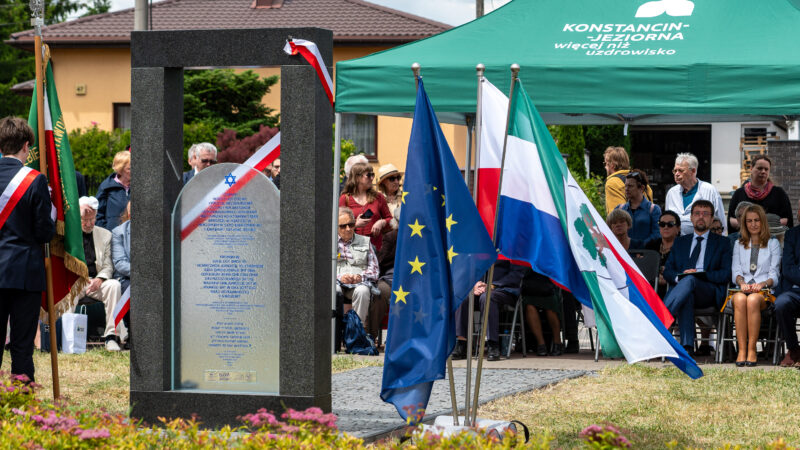Memorial “Macewa Pamięci” in Konstancin-Jeziorna
On Wednesday, 25 June, at the Armii Krajowej roundabout in Konstancin-Jeziorna, we ceremoniously unveiled the ‘Macewa Pamięci’ (Matzevah of Remembrance) monument commemorating Jews from Jeziorna, Konstancin and the surrounding area who were murdered during World War II.
The commemoration was unveiled jointly by Dr Katarzyna Person, Director of the Warsaw Ghetto Museum, Dr Mateusz Szpytma, Deputy President of the Institute of National Remembrance, and Michał Wiśniewski, Mayor of Konstancin-Jeziorna. Rabbi Shai Welfeld and Canon Jacek Dzikowski, Vice-Dean of the Konstancin Deanery, said a prayer for the deceased. The ceremony was attended by local authorities, residents of the Konstancin-Jeziorna municipality, schoolchildren accompanied by their teachers, historians and non-governmental organisations.
Dr Katarzyna Person, director of the Warsaw Ghetto Museum, emphasised in her speech during the ceremony the importance of preserving the memory of the deceased and murdered Jews, residents of Konstancin and the surrounding area:
“The matzeva erected here symbolises not only remembrance, but above all our shared commitment to fight for this memory and to preserve it. It is our duty to cherish this memory, which is why this ceremony and the presence of everyone gathered here is so important. It is not only a sign of respect for those Jews who have passed away, but also a sign that this memory will live on.”
On the eve of the outbreak of war, approximately 655 Jews lived in Jeziorna. The size of the community grew in the 19th century when industrialist Edward Natanson renovated and expanded the paper mill in Jeziorna. Many Jews found employment and business opportunities there. At the same time, summer resorts near Warsaw – Skolimów, Chylice and Konstancin – developed, where Jewish entrepreneurs opened shops, workshops and guesthouses. During World War II, the history of this community came to an end. German troops entered the town in mid-September 1939. At the turn of 1940 and 1941, the Germans established a ghetto in Jeziorna.
The tragic events culminated on 25 January 1941, when the German police carried out a deportation operation, as a result of which over 600 Jews from Jeziorna were transported to the Warsaw ghetto. Most of the deportees, like hundreds of thousands of other ghetto prisoners, were transported to the Treblinka extermination camp in the summer of 1942, where they were murdered.
This is the seventh ‘Memorial Matzeva’ that has been unveiled as part of a project to restore the memory of local Jewish communities.
Memorial Matzevot is a project co-created by the Warsaw Ghetto Museum and the Institute of National Remembrance, aimed at spreading knowledge about the life, struggle and extermination of Polish Jews in ghettos in German-occupied Poland. This social and educational initiative commemorates the victims of the Holocaust in towns and villages in the Mazovia Province where ghettos were located. The first Memorial Matzeva was unveiled in 2022 in Józefów Biłgorajski.


